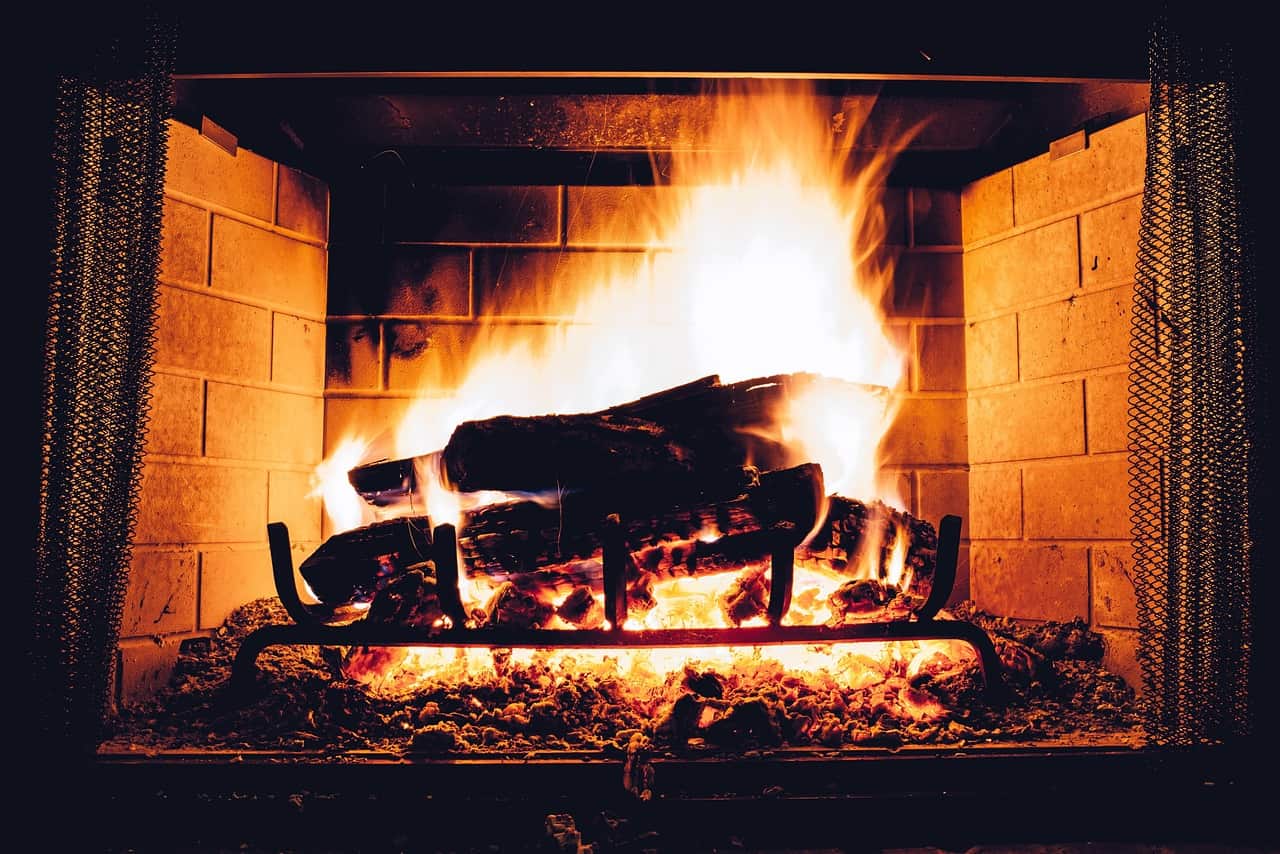- You are here:
- Home »
- Blog »
- Firewood »
- Fireplace Cleaning – What You Should Know
Fireplace Cleaning – What You Should Know
As it gets colder we are going to get to the point where we need to be lighting up the fireplace. But before we do that we should understand all about fireplace cleaning so we get a fire that burns hot and is totally safe.
Almost all of the problems I hear from customers come back to one thing, their fireplace is not drawing properly. I have put together a few tip and tricks here to make sure that you get the best fire possible out of your fireplace and more importantly, save some money along the way.
A clean, well-drawing fireplace burns the wood at a higher temperature. This means you get more heat for the same amount of wood and therefore save money.
Safety First
If not properly maintained, wood burning fireplaces are a potential source of house fires. Embers popping out of an unscreened fire or chimney fires from residue build-up are just two of the hazards that can be avoided with proper care.
Wood burning fireplaces can also negatively affect indoor air quality. According to Burn Wise, a program of the US Environmental Protection Agency, “Smoke may smell good, but it’s not good for you.” Any smoke escaping from the firebox into the room means the fireplace isn’t operating properly.
Since fires consume a large volume of air as they burn, it’s possible to create negative pressure in the home as air from outside is drawn indoors to replace the air consumed by the fire. If that “make-up” air is drawn back in through the flues of gas- or oil-burning furnaces and water heaters, it can also draw deadly flue gases, like carbon monoxide, back into the home. This is called “backdrafting” and is highly dangerous. It is a good idea to fit a carbon monoxide alarm in the room of the fireplace to monitor this.
So cleaning your fireplace is important but what is the best way to clean your fireplace? It might seem like a daunting task you want nothing to do with, but just follow these tips and you can finish it easily.
Some Quick Fireplace Cleaning Suggestions
- Vacuum or dust the hearth area weekly to prevent dust and soot buildup. Do not sweep or vacuum until all the embers have been extinguished for at least 12 hours.
- Burn only seasoned, well-dried wood to minimize dangerous creosote buildup.
- Inspect the firebox, flue, and chimney annually for creosote accumulation.
- Do not use water to drown a fire unless there is an emergency. It will make a paste of the ashes, which is difficult to remove.
- Never use an abrasive cleanser inside the fireplace. Many leave a flammable residue.
- When cleaning your fireplace, sprinkle damp coffee grounds over the cooled ashes to keep down the dust.
Warning – Do This Test First
- Test out the function of your fireplace by lighting a few small pieces of seasoned wood, lit from the top down. If the smoke doesn’t exit vertically from the fireplace into the chimney but enters the room, it probably means that the fireplace is not drawing properly. You will need to see if there are any obstructions in the flue/chimney.
- These can include creosote/soot build-up, other debris in the chimney like bird or animal nests, a damper that is closed or partially closed, or wet wood that isn’t burning well.
- Burn only seasoned, not “green,” wood. Seasoned wood is wood that has been cut and dried under cover for at least 6-12 months, registering less than 20% moisture. Split wood dries more thoroughly and burns better than whole logs. All of our wood from Manna Gum Garden and Building Supplies is seasoned and ready to burn with a moisture rate of around 17%.
- Well-seasoned wood makes a sharp ringing sound when two logs are knocked together, while green wood makes a dull thud. Green, undried wood will not burn as thoroughly, creating more soot and creosote.
Clear the working space.
Cover the carpets and nearby furniture with old sheets or plastic sheets to avoid any mess. Don’t be stingy with the plastic sheets; this is going to be an incredibly dusty task and soot can land everywhere.
A pair of knee pads or a folded up towel will come in very handy while working on this project. And it’s a good idea to put on gloves, a face mask, and protective eyewear to keep the soot from irritating your lungs and skin.
When cleaning a fireplace, it’s best to also wear old clothes you won’t mind discarding afterward if they become too badly stained. Wearing gloves and a dust mask is also highly recommended to avoid breathing any soot.
Clear the ashes and debris.
Birds typically build nests in the chimney or flue of fireplaces that are not used frequently. Possums can also sometimes get stuck up the chimney too. These obstacles will definitely make fireplace cleaning less enjoyable. It is better to know they are there to start with than finding them in the middle of the cleaning job.
Before clearing out the fireplace, make sure that there are no bird nests or other obstructions first. Now you can get your hands dirty knowing there aren’t any nasty surprises about to fall at your feet, or worse, on your head! Using a small shovel or broom, collect the ashes and dust in the firebox (where you burn logs) and you can dispose of the mess properly in the trash or package it up into bags. The ashes can be combined with compost if you do this at home too as it adds great minerals back into the soil.
Clean the grate and grille.
Sweep off dust and ashes from the grate, then take it outside for a more rigorous cleanse. You can use a brush dipped in dishwashing detergent to scrub away the soot, or just blast it with the hose or a power washer. Sun drying is fine too. The more debris caught up in your grate means less oxygen getting through the fire. This means less heat and MORE cleaning. Hotter fires leave less residue and make for easier maintenance.
Clean the bricks.
Maybe once a year it is worthwhile cleaning all the bricks (or blocks) on the inside of the fireplace. I find that using a dry bristle brush to clean the brickwork is the easiest and it does the best job.
Start at the top wall and work steadily downwards to remove the ashes. Once that’s done, you can now scour the bricks using a cleaning solution. You can make the solution by mixing 3 tablespoons of TSP, ½ cup of bleach and a litre of hot water. Like before, go from top to bottom. If the appearance matters to you use old rags to wipe everything down after scrubbing. Repeat the process as many times as needed.
Fireplace cleaning is essential. A clean and properly maintained fireplace keeps you safer and it will look better and most importantly BURN more efficiently.
Aside from firewood, we also offer a range of garden and building supplies in Ferntree Gully, Rowville, and surrounding Eastern suburbs. Call us on (03) 9752 2434 for enquiries.


